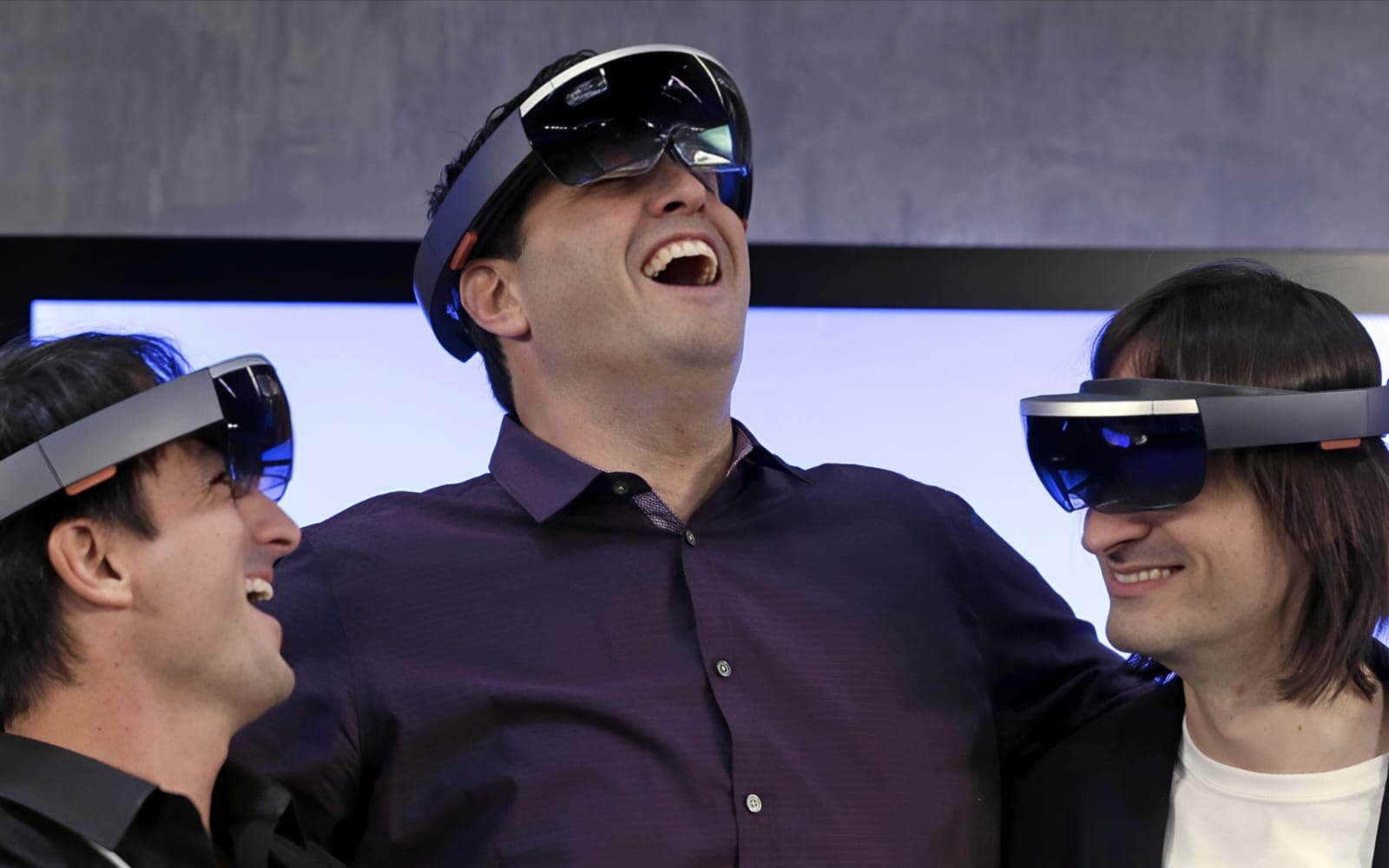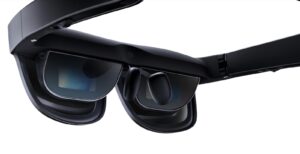
Contents
- 1 Smart Glasses Are Overshadowing Virtual Reality, and the Evidence Lies in Meta’s Projected Earnings for 2025
- 1.1 The Rise and Plateau of Digital Actuality
- 1.2 Good Glasses: A Extra Sensible Future
- 1.3 Meta’s Shift: From Metaverse to Good Glasses
- 1.4 The Broader Trade Response
- 1.5 Implications for Builders and Customers
- 1.6 FAQs:
- 1.6.1 Q1: Are sensible glasses changing VR?
- 1.6.2 Q2: What can sensible glasses try this VR headsets cannot?
- 1.6.3 Q3: Will Meta cease making VR headsets?
- 1.6.4 This fall: Do sensible glasses want a smartphone to work?
- 1.6.5 Q5: How do sensible glasses use AI?
- 1.6.6 Q6: Are sensible glasses protected and personal?
- 1.7 Conclusion: The Future Wears Glasses
Smart Glasses Are Overshadowing Virtual Reality, and the Evidence Lies in Meta’s Projected Earnings for 2025
The world of immersive expertise is present process a seismic shift. Whereas Digital Actuality (VR) as soon as captured the creativeness of shoppers and builders alike, a brand new frontrunner has emerged: sensible glasses. Sleeker, extra moveable, and more and more highly effective, sensible glasses are quickly changing into the face of mainstream augmented and blended actuality experiences. The clearest signal of this transformation? Meta’s projected earnings for 2025.
This text explores why sensible glasses are overtaking VR in public notion and investor curiosity, how Meta’s enterprise technique is shifting accordingly, and what this implies for the way forward for prolonged actuality (XR)

The Rise and Plateau of Digital Actuality
A Promising Begin
Digital Actuality has undergone a lengthy and intricate journey.Within the 2010s, the launch of units just like the Oculus Rift (acquired by Meta in 2014) and HTC Vive promised a brand new period of gaming, communication, and digital workspaces. Meta doubled down on VR with its Quest line, culminating within the Quest 2 and three, inexpensive all-in-one VR headsets that discovered cheap success.
Boundaries to Adoption
Regardless of the thrill, VR encountered a number of obstacles:
- Cumbersome {Hardware}: VR headsets are sometimes heavy, uncomfortable, and tethered.
- Restricted Use Circumstances: Primarily gaming-focused, with little mainstream utility.
- Movement Illness: Widespread amongst customers, particularly in longer periods.
- Isolation Issue: VR removes customers from their environment, lowering real-world consciousness.
A Area of interest, Not a Norm
By 2023–2024, it turned clear that VR had not turn out to be the ever-present computing platform Meta had hoped for. Whereas well-liked amongst players and enterprise coaching use instances, mass shopper adoption lagged. In the meantime, one other XR expertise quietly rose to prominence.
Good Glasses: A Extra Sensible Future
What Are Good Glasses?
Good glasses are wearable units that resemble standard eyewear however combine augmented actuality (AR) capabilities. This contains heads-up shows, voice assistants, cameras, and even AI integration, permitting for hands-free computing with out complete immersion.
Meta, in collaboration with Ray-Ban and EssilorLuxottica, has introduced its Ray-Ban Meta sensible glasses, merging fundamental fashion with advanced performance features such as:
- Livestreaming from a first-person view
- Voice-controlled photograph seize
- OpenAI-powered AI assistant
- Constructed-in audio system and microphones for calls and media
Why Good Glasses Win
Several factors provide traditional glasses with an advantage over virtual reality:
- Portability and Fashion: They feel and look like regular glasses, lowering the stigma and discomfort related to VR headsets.
- Actual-World Context: Not like VR, AR retains customers related to their environment.
- AI Integration: Good glasses seamlessly incorporate generative AI for real-time data, translation, or interplay.
- On a regular basis Use: Ultimate for strolling, working, touring, and capturing content material.
Meta’s Shift: From Metaverse to Good Glasses

The Earnings Clue
Meta’s Q1 2025 earnings and ahead projections have highlighted a notable pivot:
- Good Glasses are outpacing VR headsets in income progress.
- The Ray-Ban Meta eyewear collection is anticipated to yield more than $2.5 billion in revenue by the year 2025.
- In distinction, Quest headset gross sales have plateaued, with progress beneath 10% year-over-year.
Mark Zuckerberg, Meta’s CEO, described sensible glasses because the “breakout kind issue for mainstream blended actuality,” shifting Meta’s long-term imaginative and prescient towards units that mix AI and AR into day by day life.
Strategic Repositioning
Meta has reallocated assets:
- Elevated R&D for sensible glasses and miniaturized shows.
- Scaled again VR-exclusive content material investments.
- Integrated Llama 3 and Meta AI directly into practical eyewear to facilitate real-time generative replies.
This shift aligns with shopper conduct. Individuals need expertise that enhances their actuality, not replaces it.
The Broader Trade Response
Apple, Google, and the AI-AR Arms Race
Meta is not the only company pursuing the future of practical eyewear:
- Apple is said to be working on lightweight smart glasses to enhance the Vision Pro.
- Google is reviving its AR {hardware} ambitions, integrating Gemini AI.
- Amazon and Samsung have each filed patents for wearable AR units.
The convergence of AI + AR is creating a brand new battleground, very similar to the smartphone wars of the late 2000s. However this time, the display is your face.
Implications for Builders and Customers
For Builders
- Shift from VR video games to AR utilities: Builders at the moment are exploring real-world purposes similar to language translation, productiveness overlays, and contextual search.
- Give attention to multimodal interplay: Voice, gaze, and gesture turn out to be the first enter strategies.
For Customers
- Accessibility: No extra heavy headsets or cables.
- Affordability: Entry-level sensible glasses are anticipated to hit sub-$300 worth factors by late 2025.
- On a regular basis Utility: Use instances embody strolling instructions, images, calls, health monitoring, and instantaneous AI help.
FAQs:
Q1: Are sensible glasses changing VR?

A: Not fully. Whereas sensible glasses are gaining popularity, VR nonetheless serves area of interest markets like gaming, simulation coaching, and design. Nonetheless, sensible glasses usually tend to turn out to be on a regular basis units for normal shoppers.
Q2: What can sensible glasses try this VR headsets cannot?
A: Good glasses enable customers to remain related to the actual world whereas accessing digital data. They’re light-weight, trendy, and appropriate for day by day use. VR headsets are immersive however isolating and cumbersome.
Q3: Will Meta cease making VR headsets?
A: Unlikely. Meta will proceed to develop Quest headsets, particularly for enterprise and gaming. Nonetheless, their main progress focus has shifted to sensible glasses.
This fall: Do sensible glasses want a smartphone to work?
A: Most present fashions pair with a smartphone, however future variations could function independently, very similar to smartwatches have developed.
Q5: How do sensible glasses use AI?
A: Good glasses use built-in AI assistants (like Meta AI) for duties similar to answering questions, translating languages, summarizing environment, recognizing folks or landmarks, and producing content material.
Q6: Are sensible glasses protected and personal?
A: Privateness issues stay, particularly round always-on cameras and microphones. Producers are engaged on seen indicators (like LED lights) to sign when recording is lively.
Conclusion: The Future Wears Glasses
Digital actuality helped us dream large. It painted an image of complete digital worlds, interactive video games, and distant collaboration. However as we step into 2025, reality-enhancing units—not reality-replacing ones—are profitable the race.
Good glasses are not only a novelty, however a sensible and trendy computing platform poised for mass adoption. With Meta’s earnings and strategic course making the pattern unmistakable, it is clear: the long run isn’t strapped to your face—it rests evenly in your nostril.
For shoppers, builders, and traders alike, this shift alerts a brand new chapter in spatial computing. And it begins not with a headset, however a pair of glass
